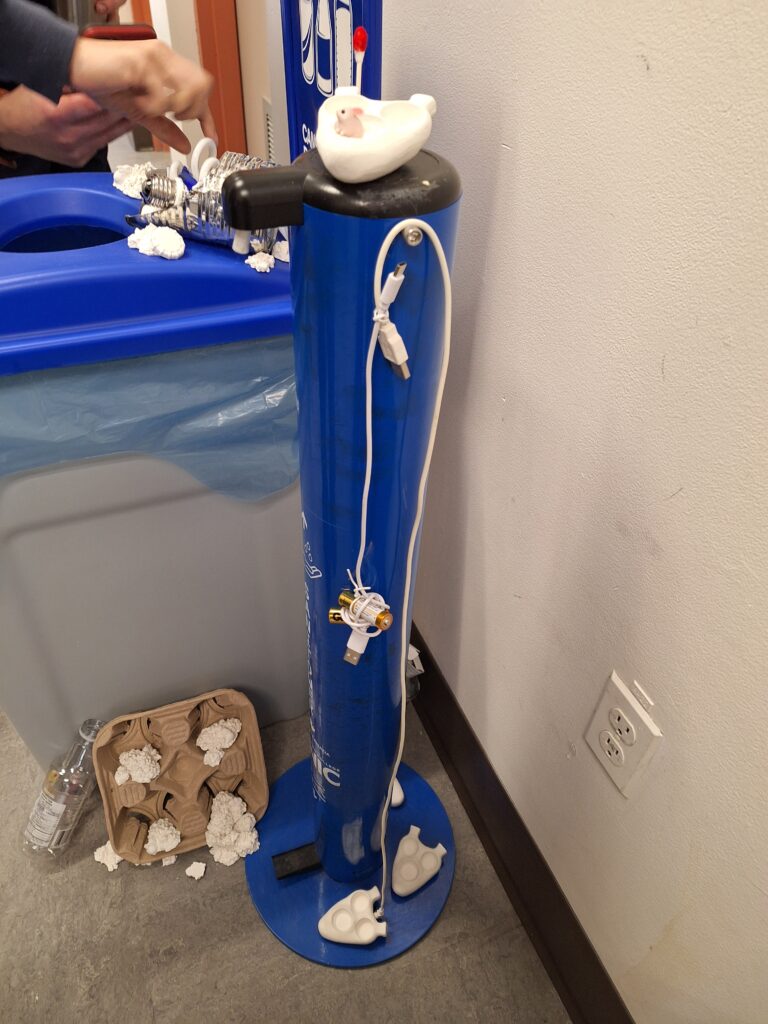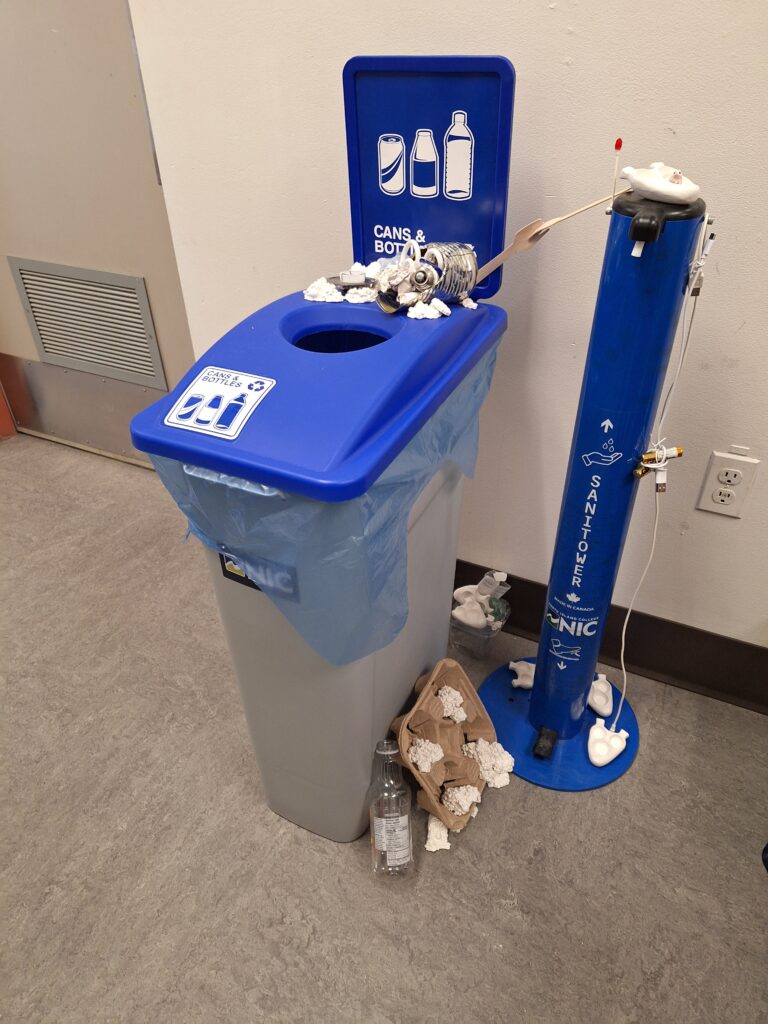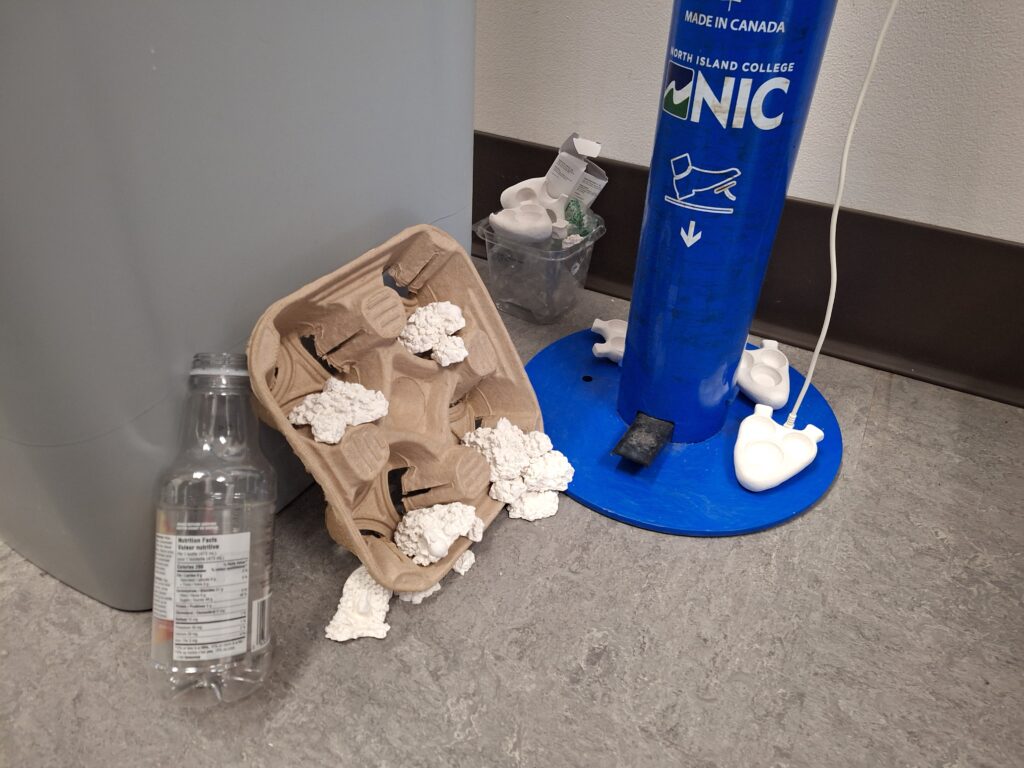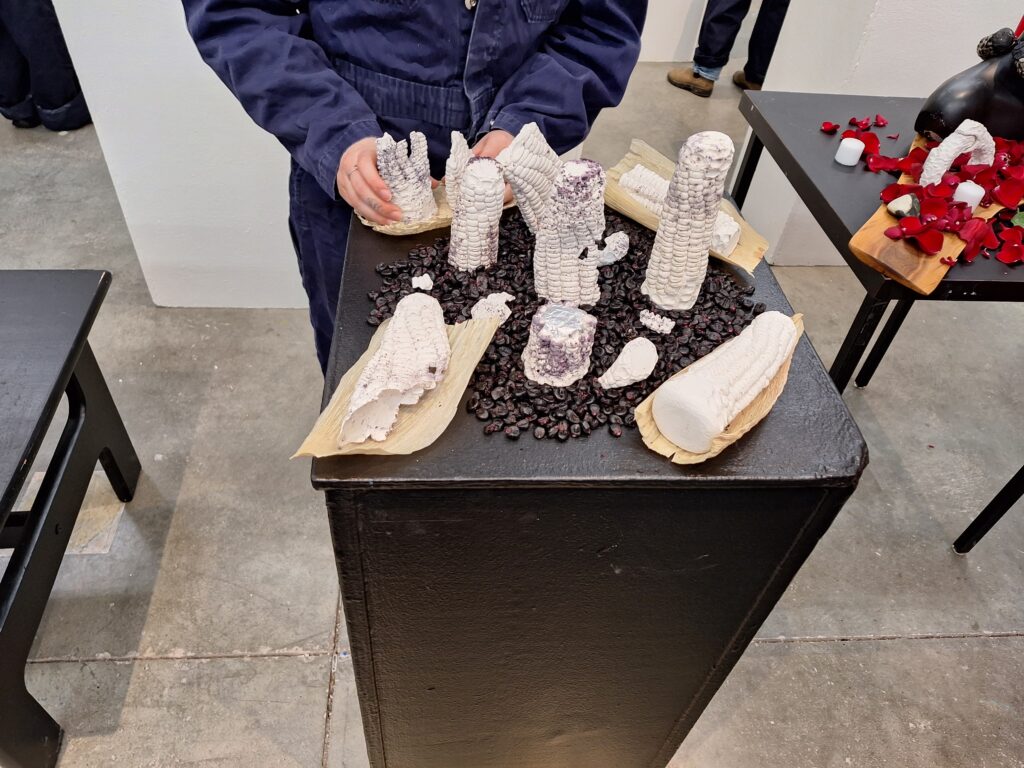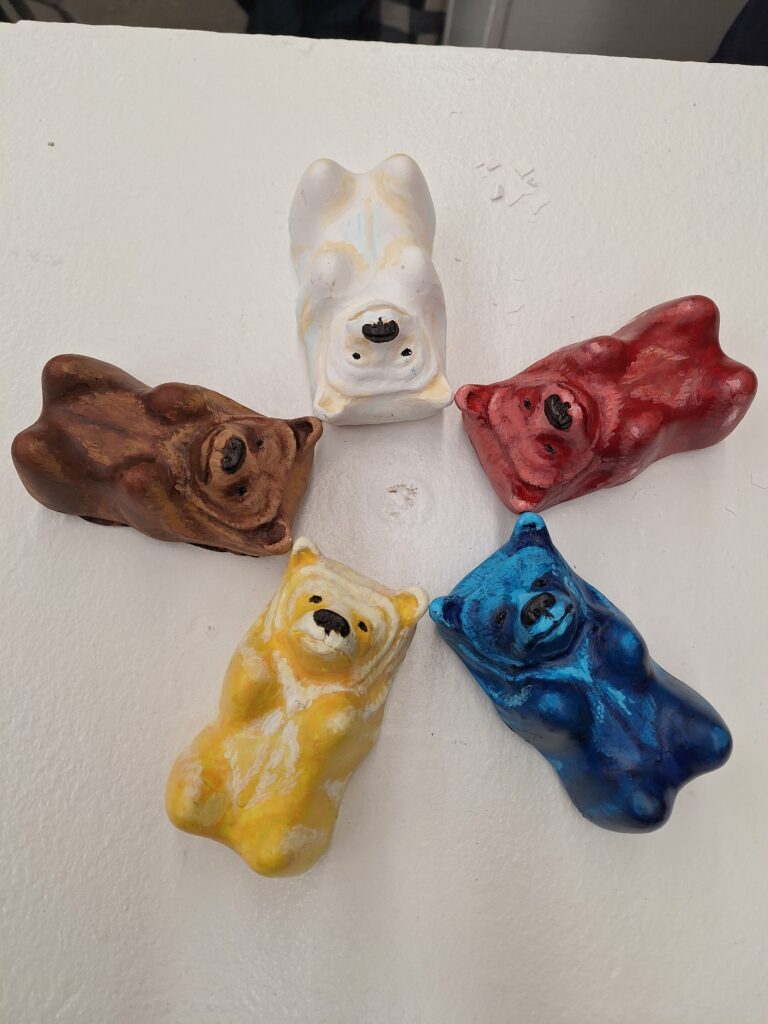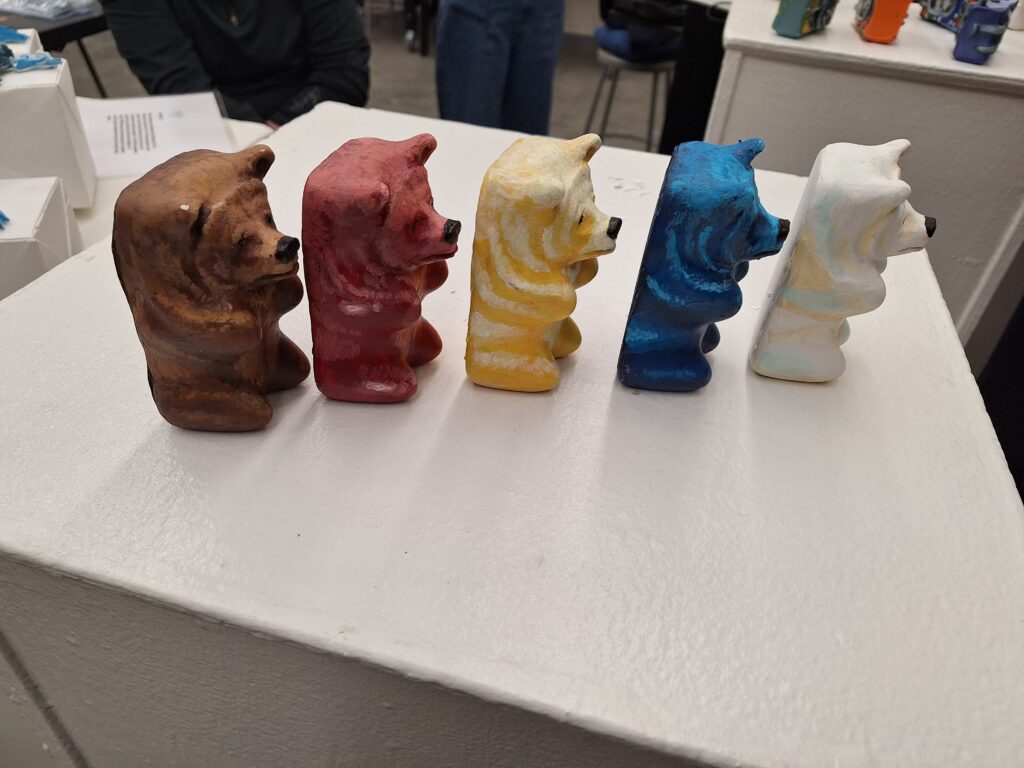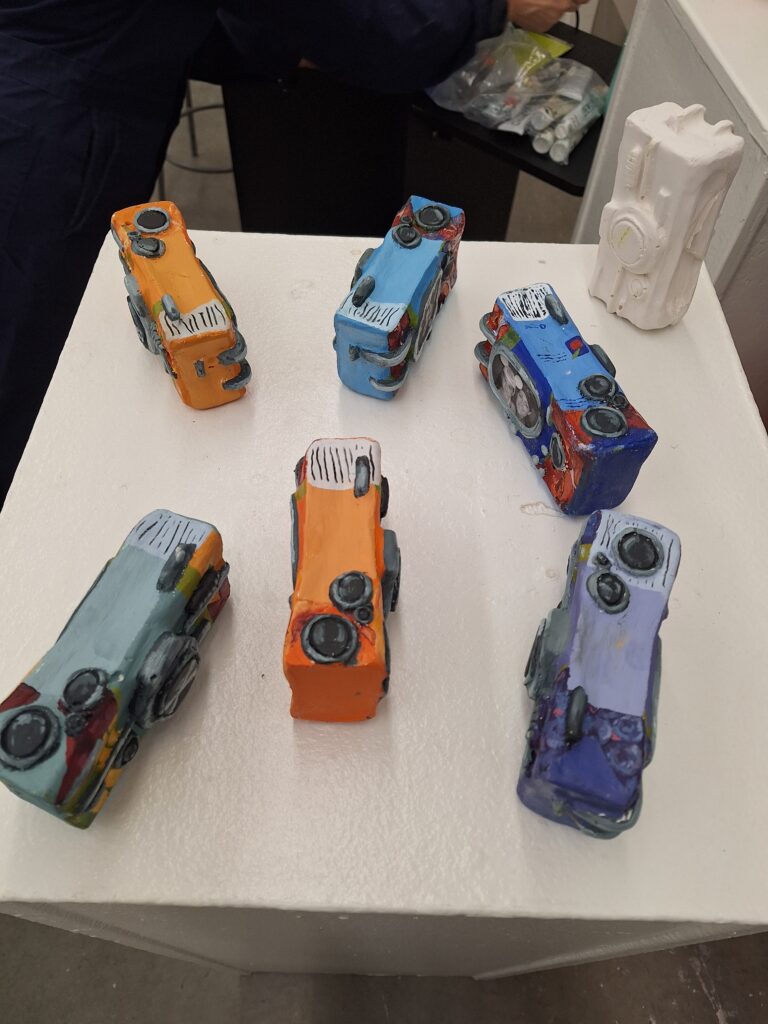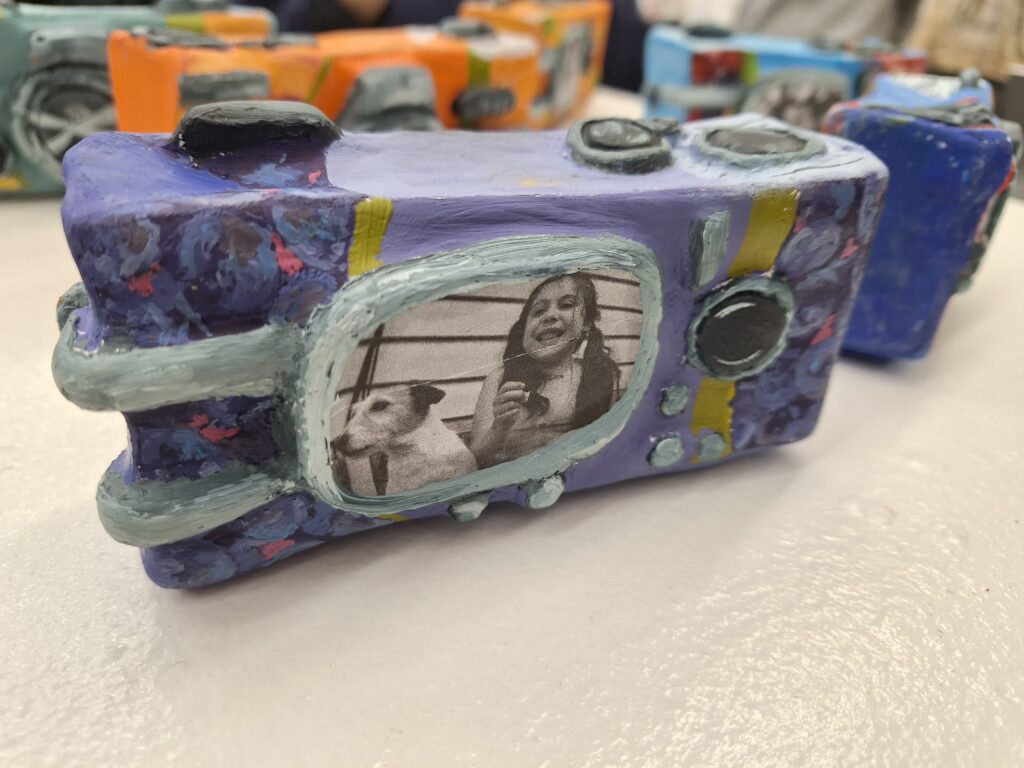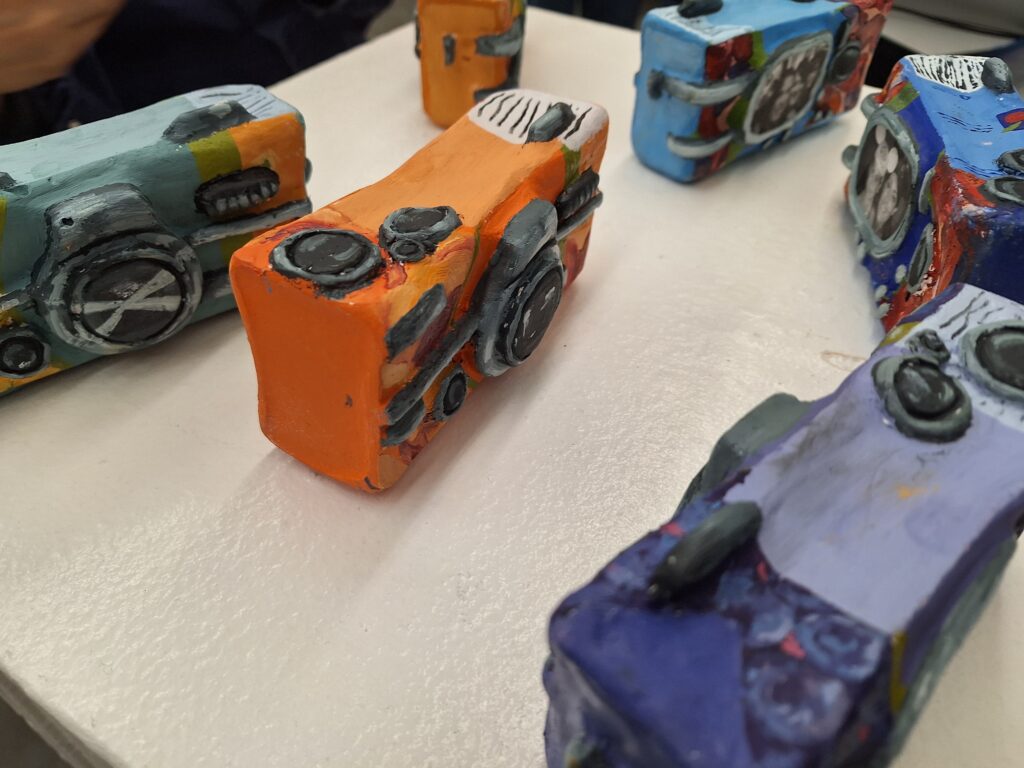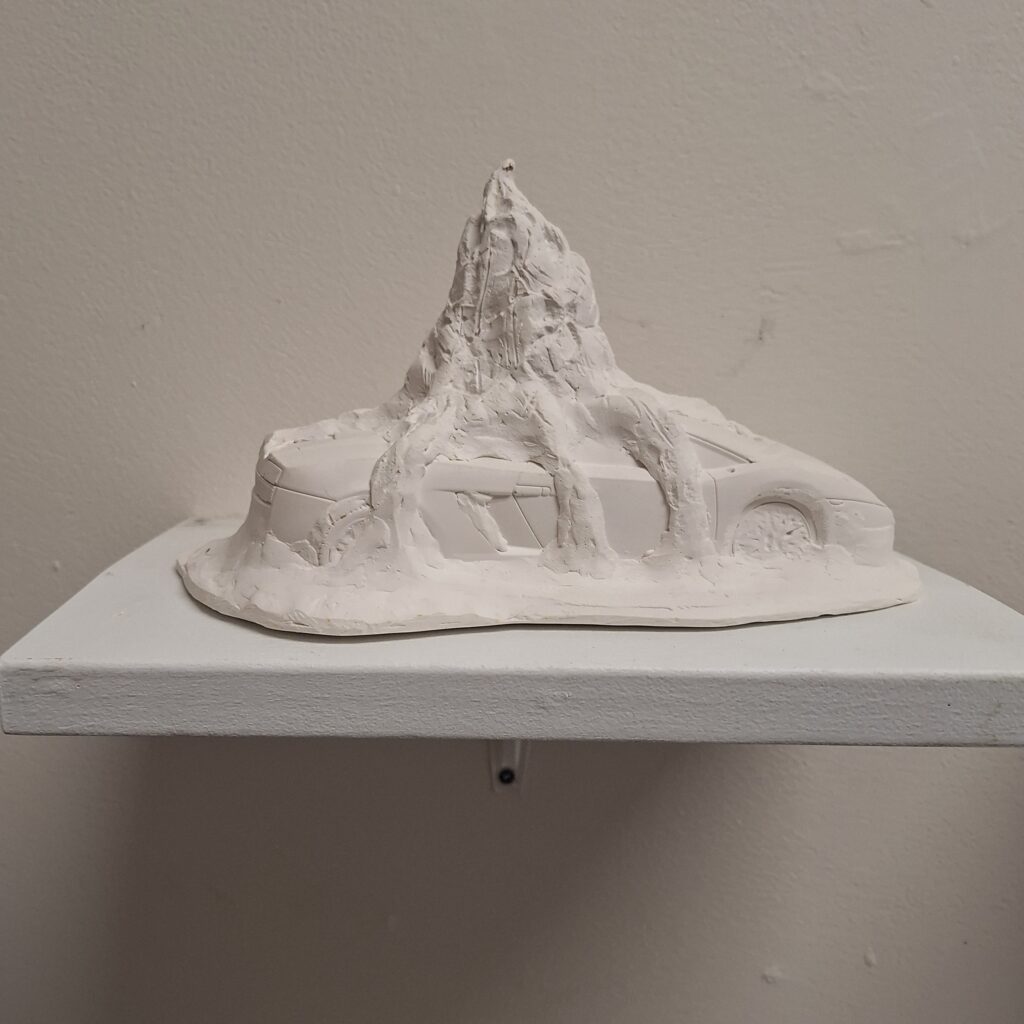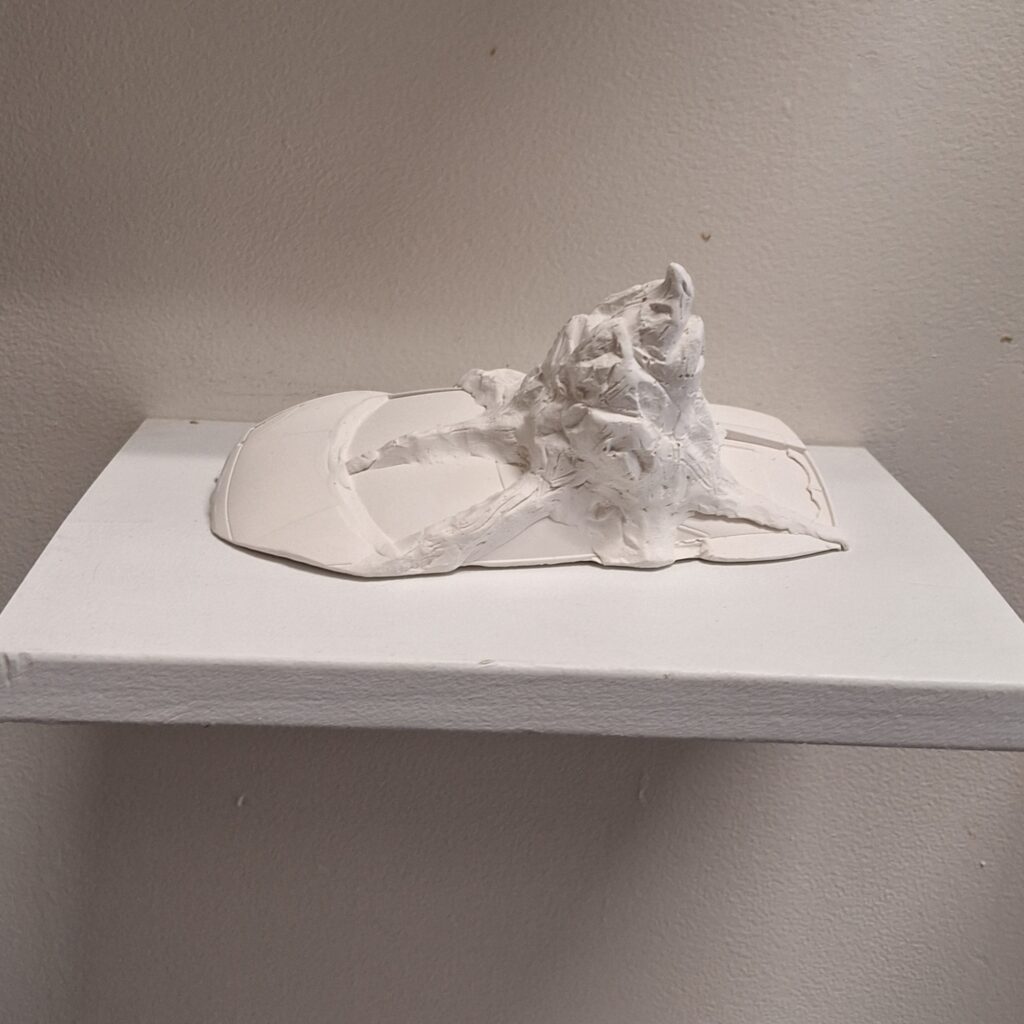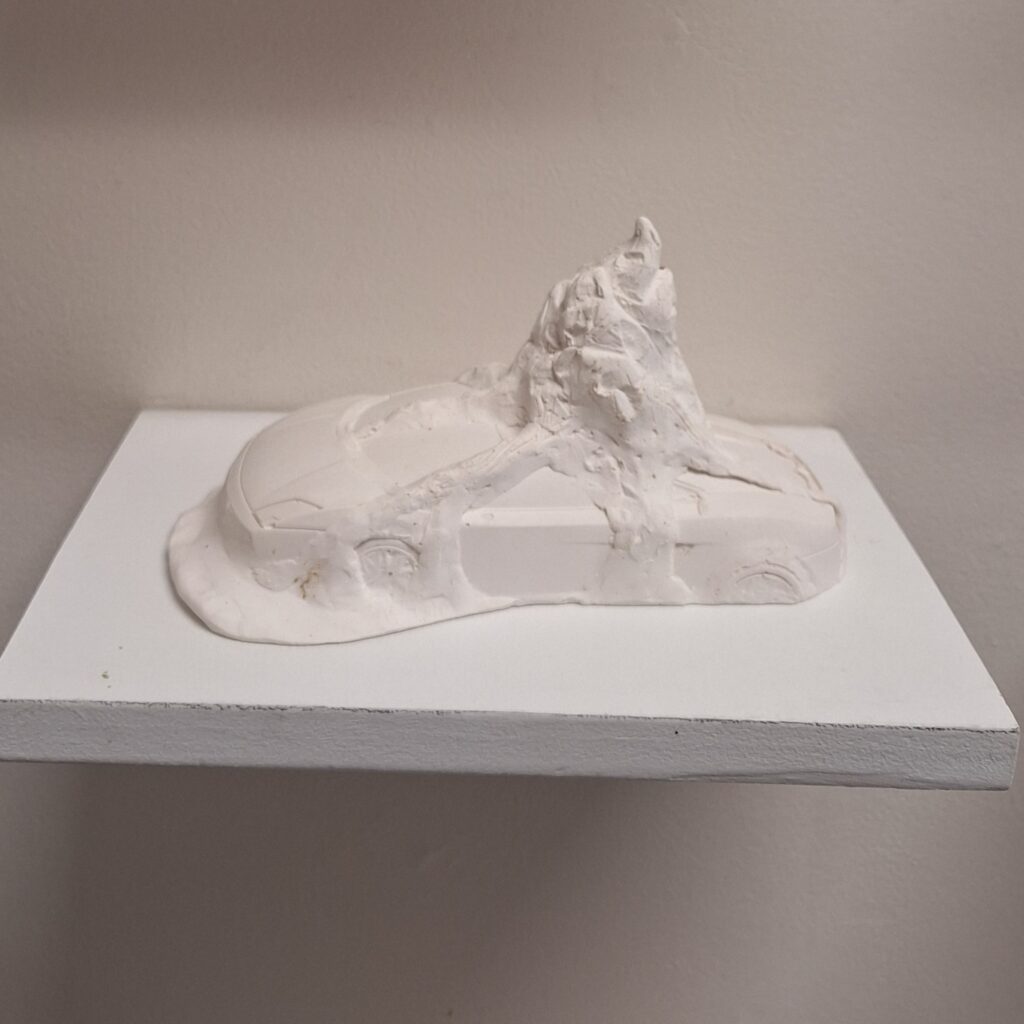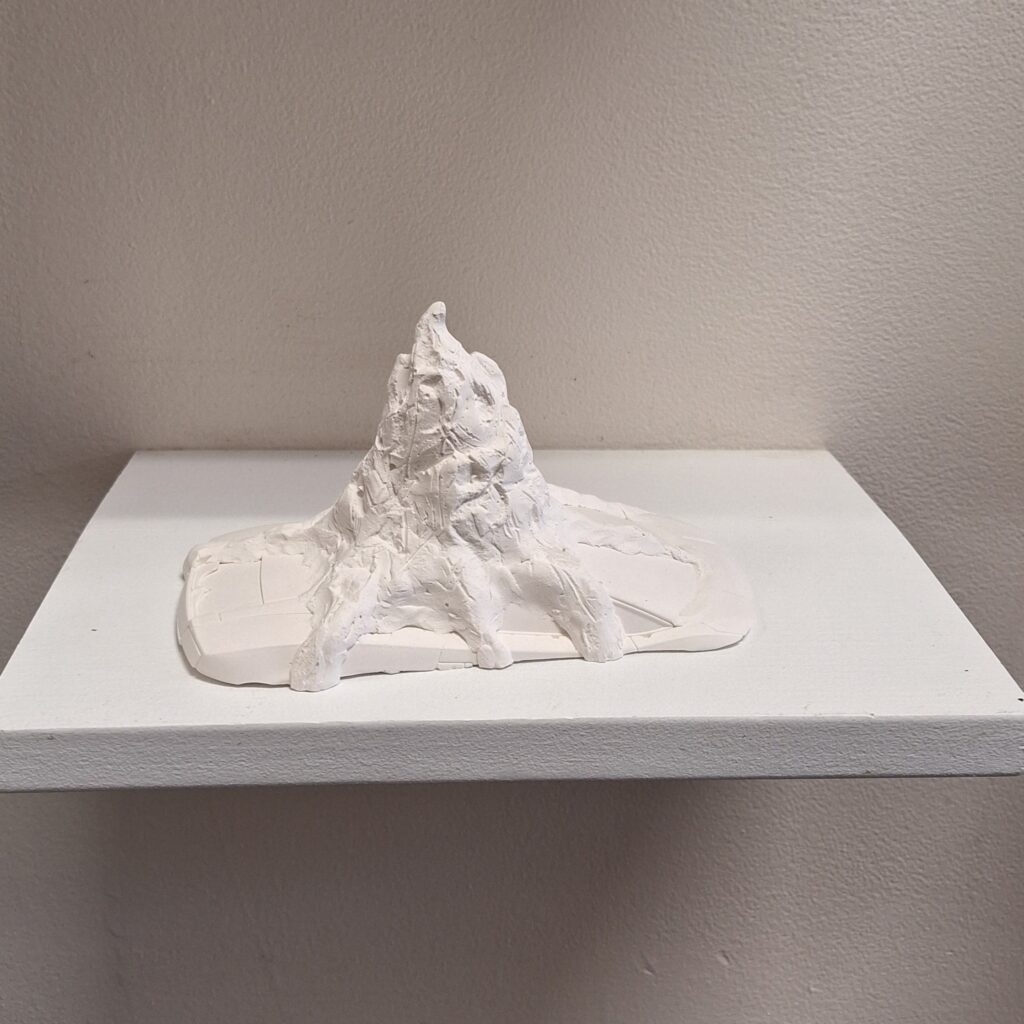Critical Response Process
The projects were displayed in the studio for presentations and will be moved to the hallway for public viewing.
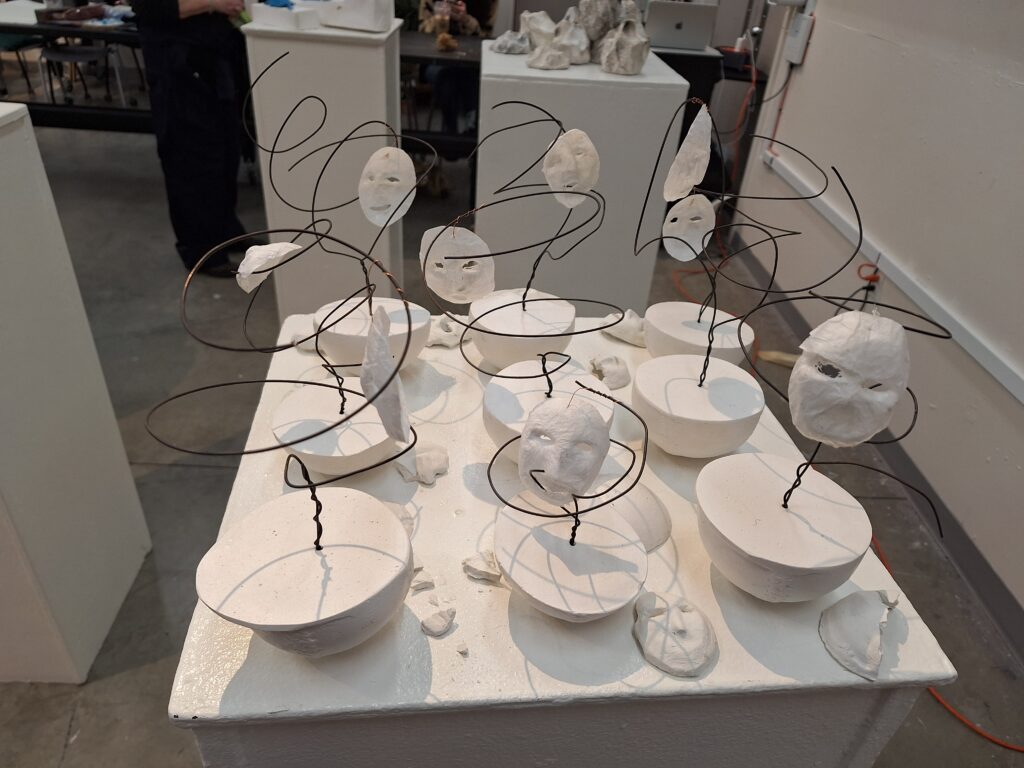
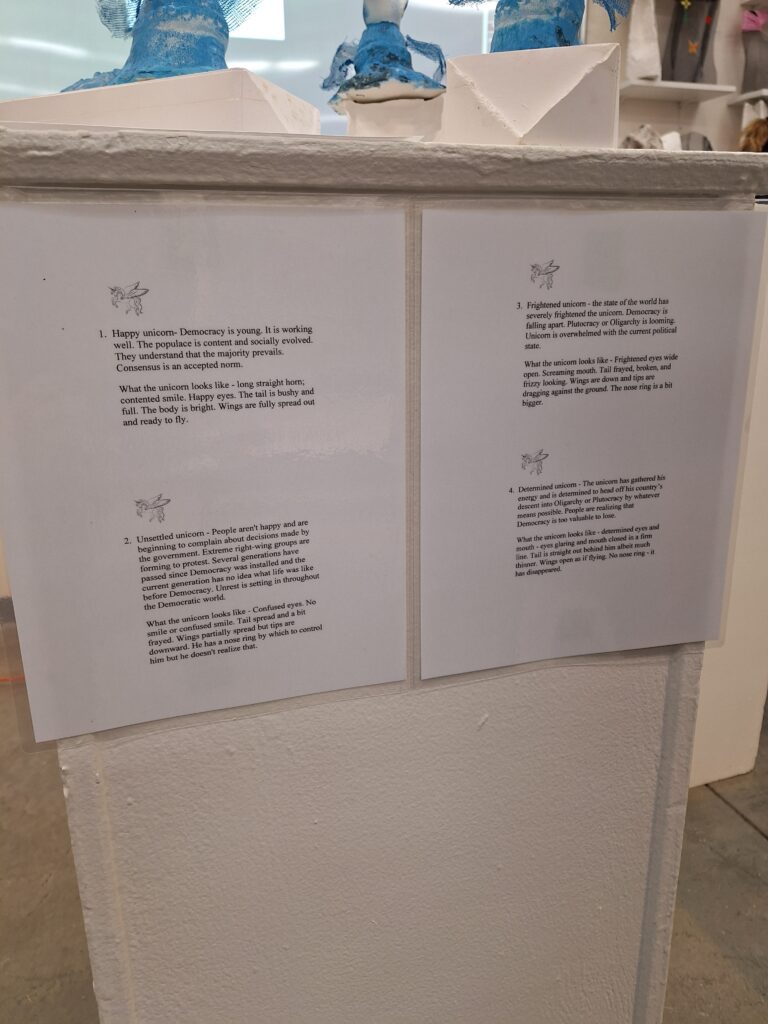
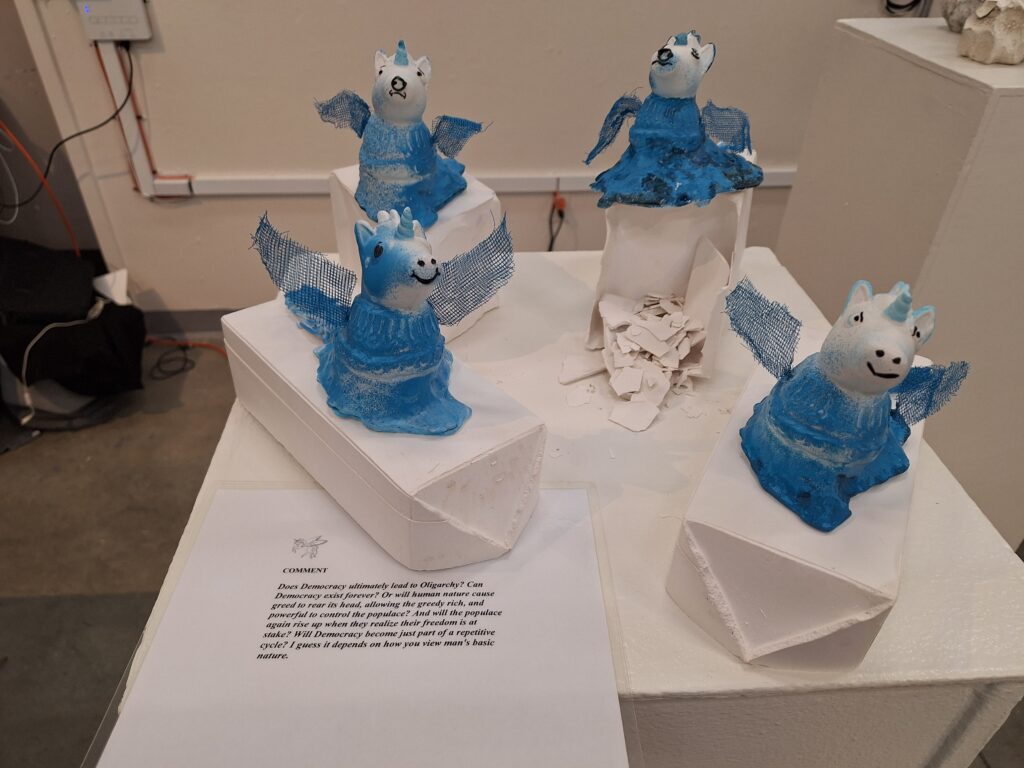
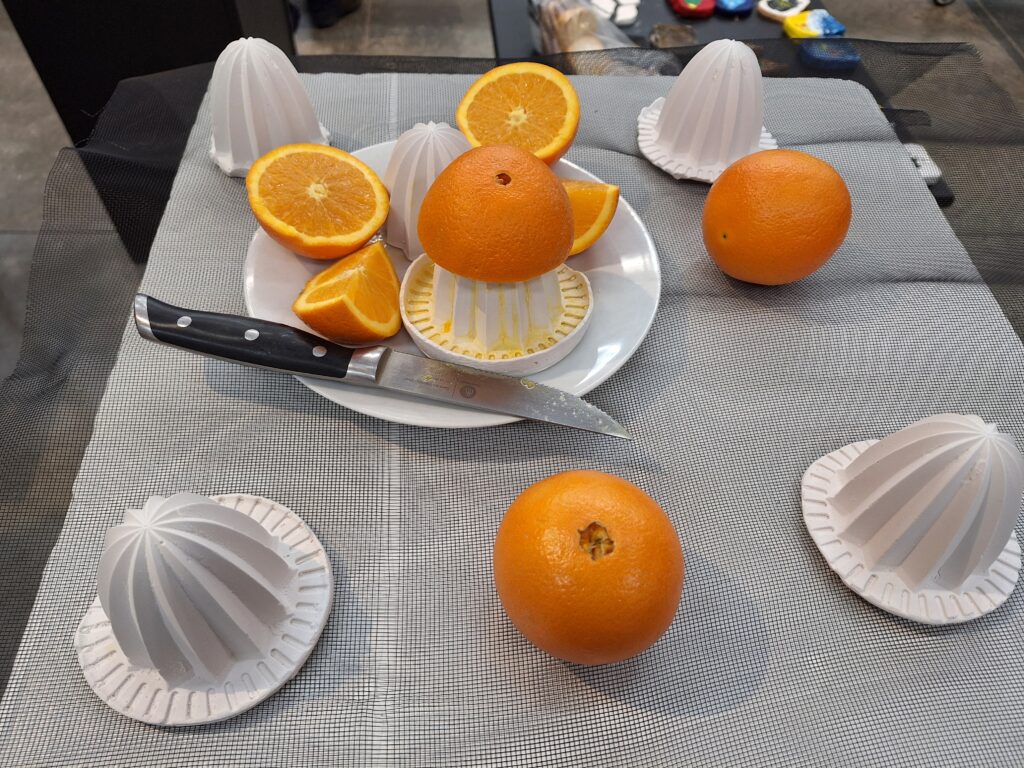
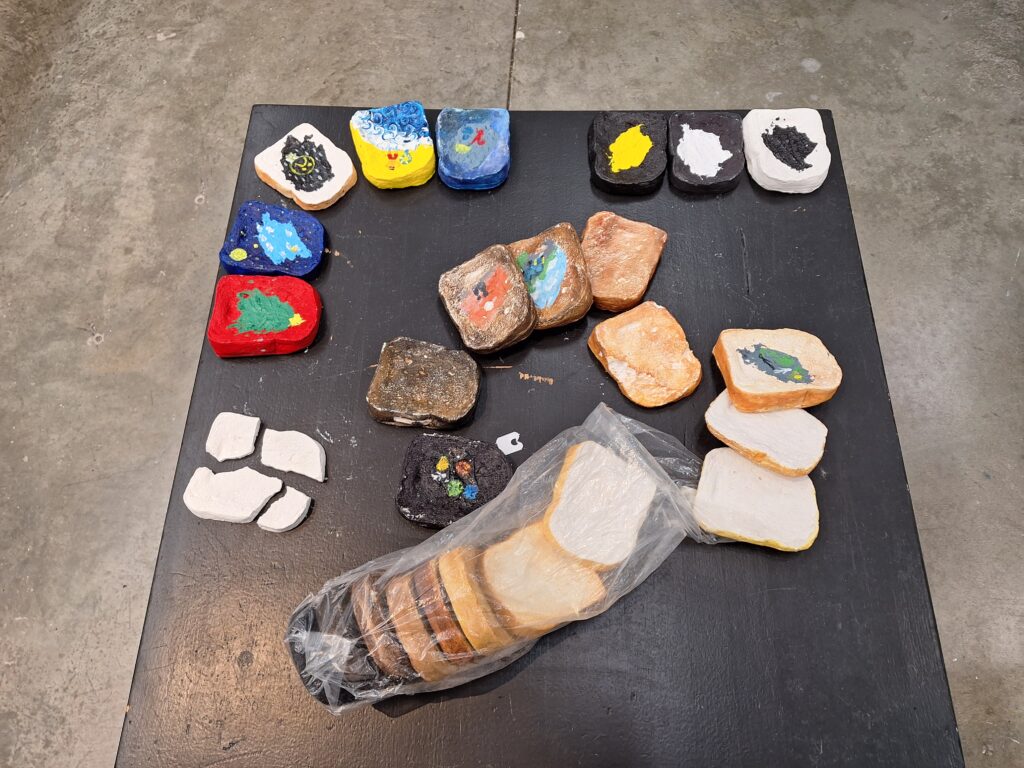
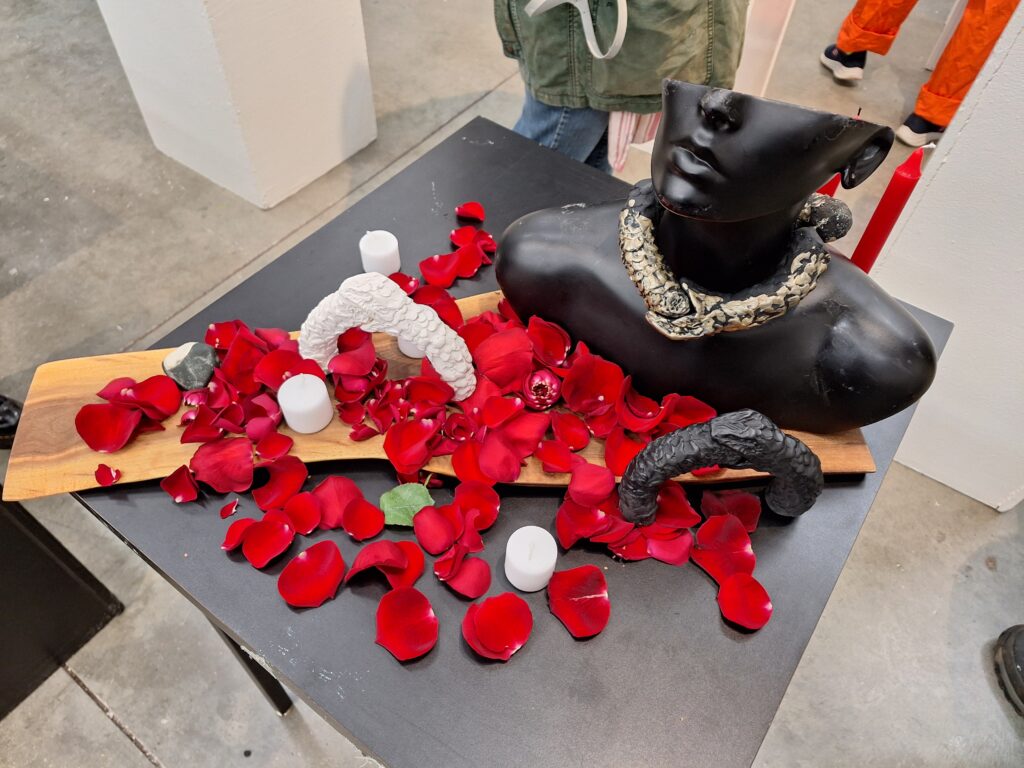
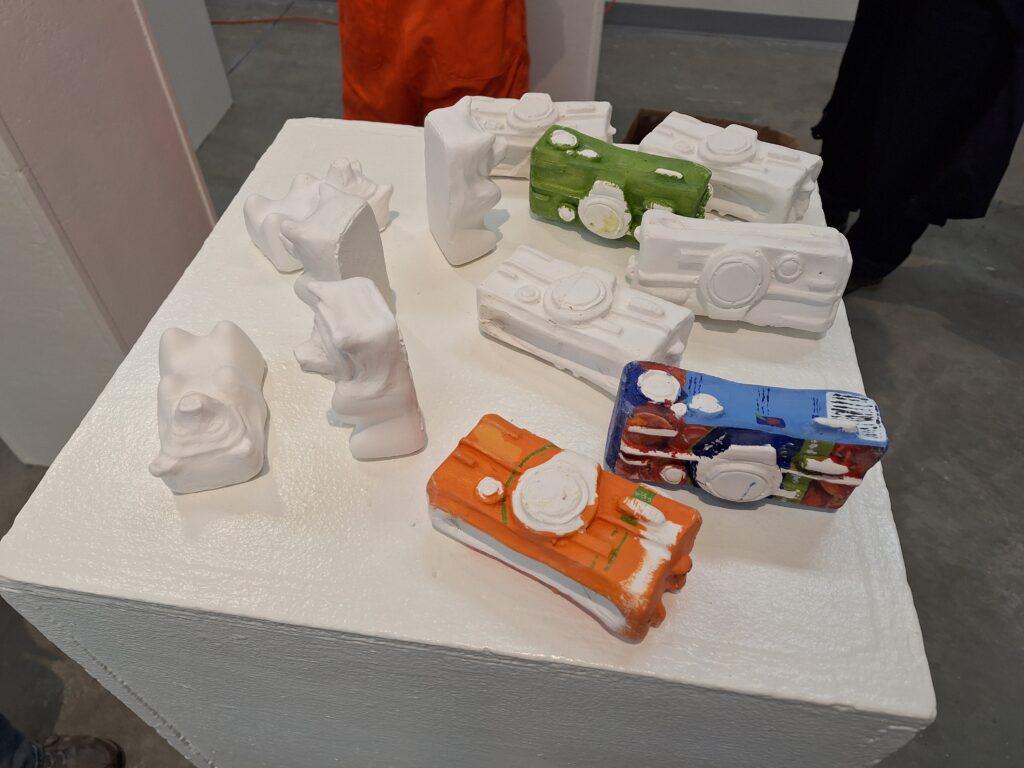
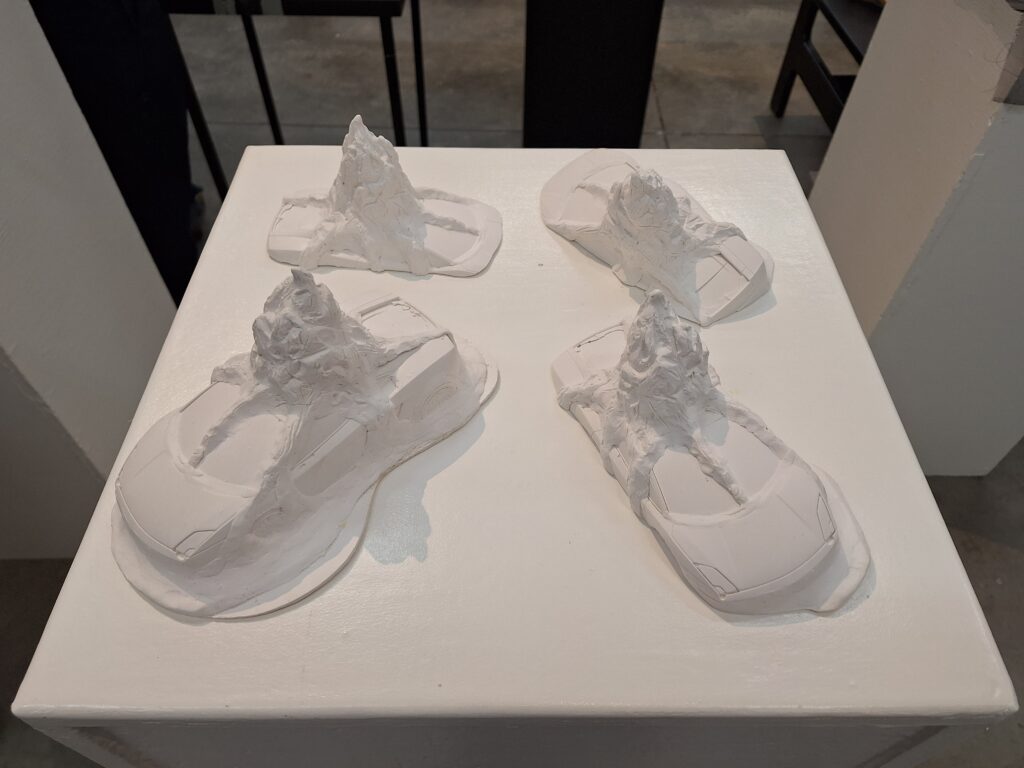
Critical Response
Ting created a story for their multiples- some bunnies in a world of recycling with spaceships. They have adapted to life in a different place. Ting explained how this mirrors their experience of moving to Courtenay and discovering their new surroundings, including feelings of missing home. One noticeable aspect of Ting’s project is how much we laughed as a group as they told us about the story and we discovered more and more hidden features of the installation.
Yaewan took a familiar object of a loaf of bread and reproduced it with an ombre effect of plain bread to lightly toasted to burnt and all points in between. This was very effective. They also spoke about how the different colours suggested different emotions. On one burnt piece was some yellow mustard and on one white piece was some jam. Yaewan talked about how the dark toast might be a dark day emotionally and that adding a positive experience might brighten the day/ lift the mood and conversely with the pale bread and jam.
Both of these artists took seemingly ordinary things and created beautiful scenarios with some deep meaning. The sharing of vulnerability was evident in the group, including Ash’s presentation of their snake collar which represented a time of renewal.
Ash had some interesting ‘problems’ with construction as they had originally envisaged making one solid collar connected with magnets. They ended up connecting the front and back with chains and jewellry clasps. This gave the snake a more contoured effect- lying on the front and back of the wearer, much as a snake might drape in real life. So although it was different to the initial idea, there were pleasing positives to the end result.
I had worked in the studio side by side with Ash and so was privileged to witness them figure these things out. My project was quite different as my mould was a one piece with a one piece mother mould. It was very interesting to watch other students work with more complex moulds and find solutions and adapt along the way.
One really cool adaptation was Gabriella’s corn moulds. They really likes the first casting that came out with flecks of the original dark corn on the surface. So each time they prepared the mould, they reinserted the original corn cob and gave it a few twists to replace a few flecks for the next casting. The end results were beautiful. Gabriella also manipulated the mould by adding clamps to create a variety of shapes. Again, there was a profound meaning behind their project as it spoke about the conflict of their home country of Columbia and the destruction and challenges it created.
It was an honour to hear everyone’s stories and connections to their projects. We were connected by art and by making these multiples together. In many cases we had poured pieces for each other in order to maximize the use of the hydrocal. This only increased the sense of community in the group.
